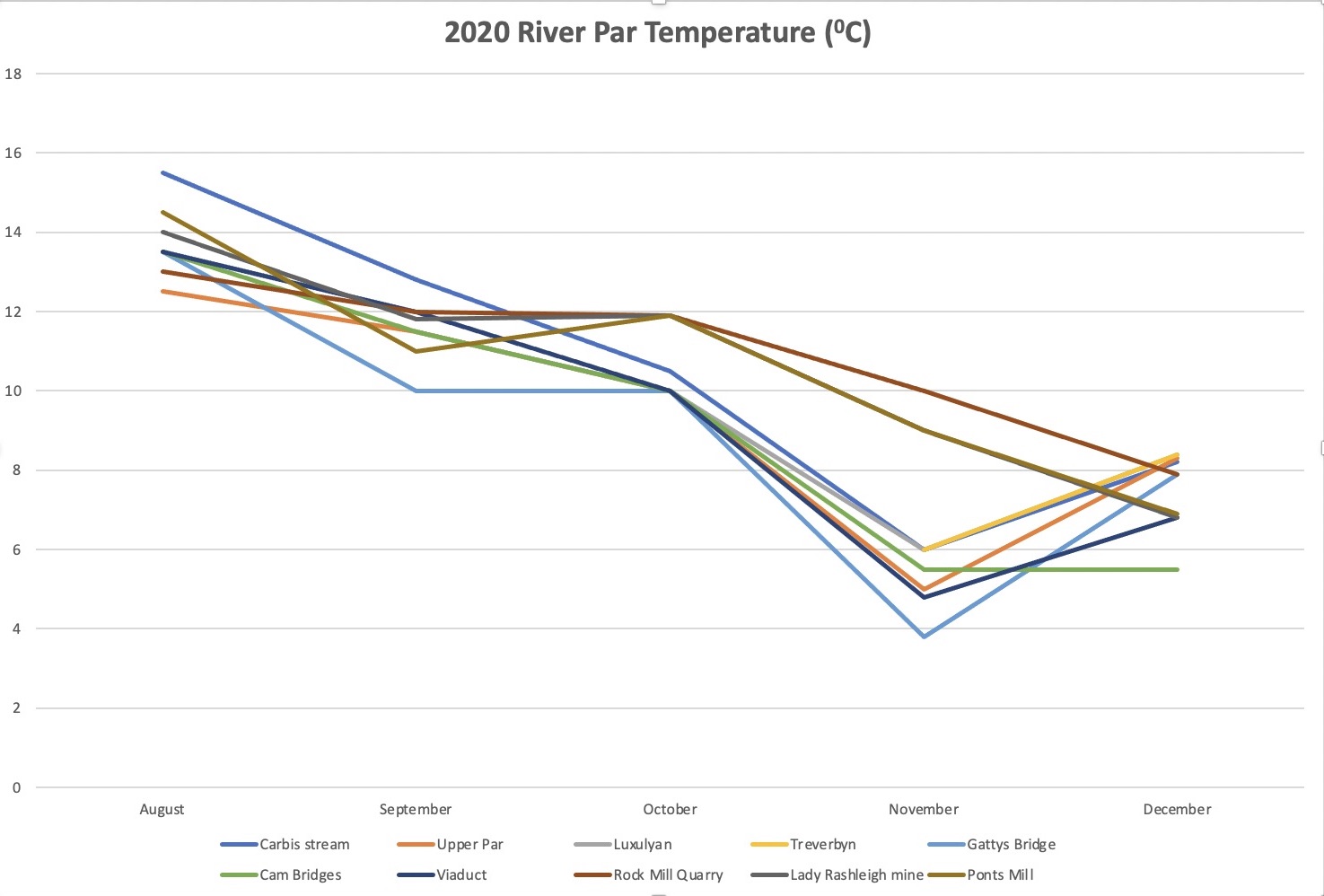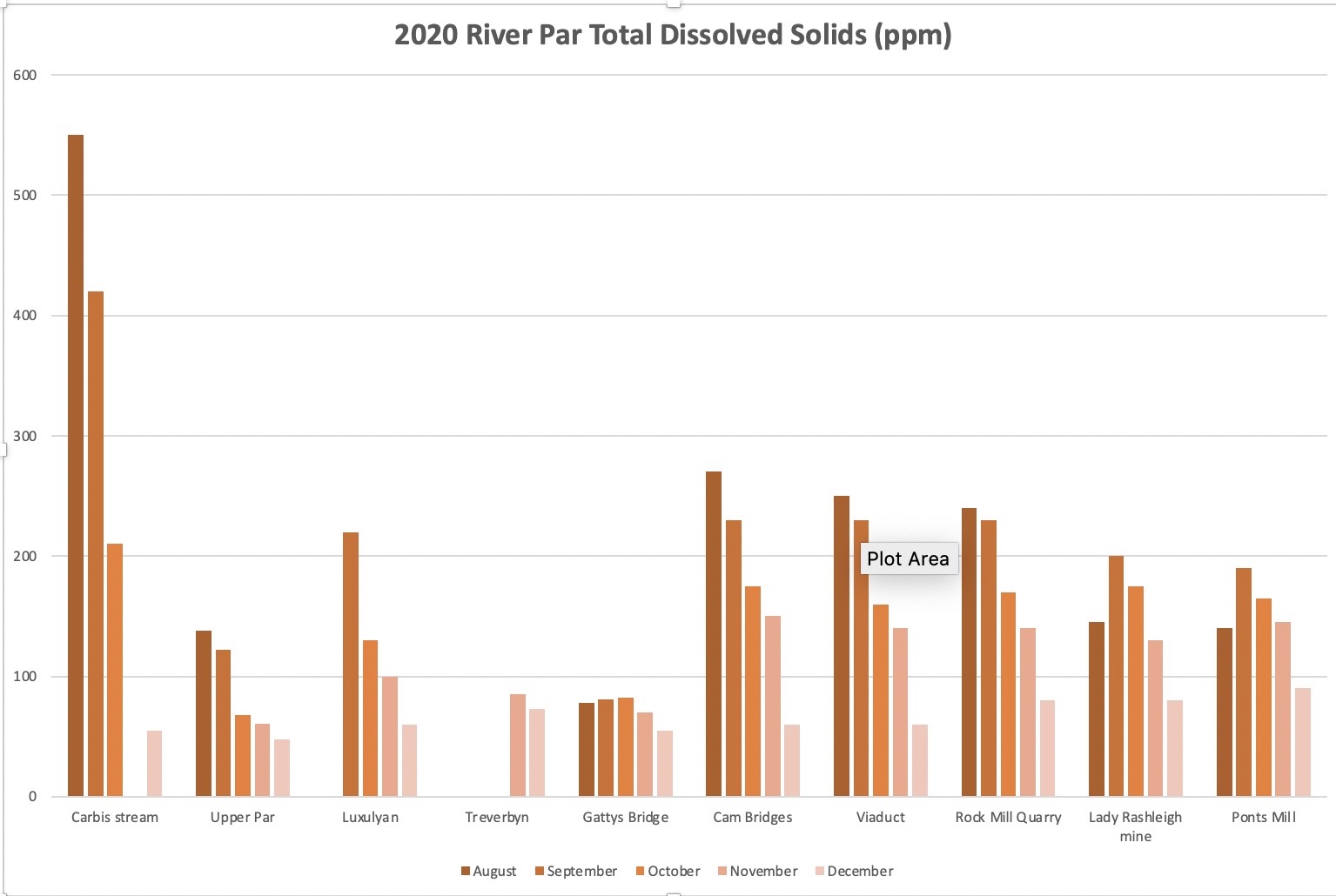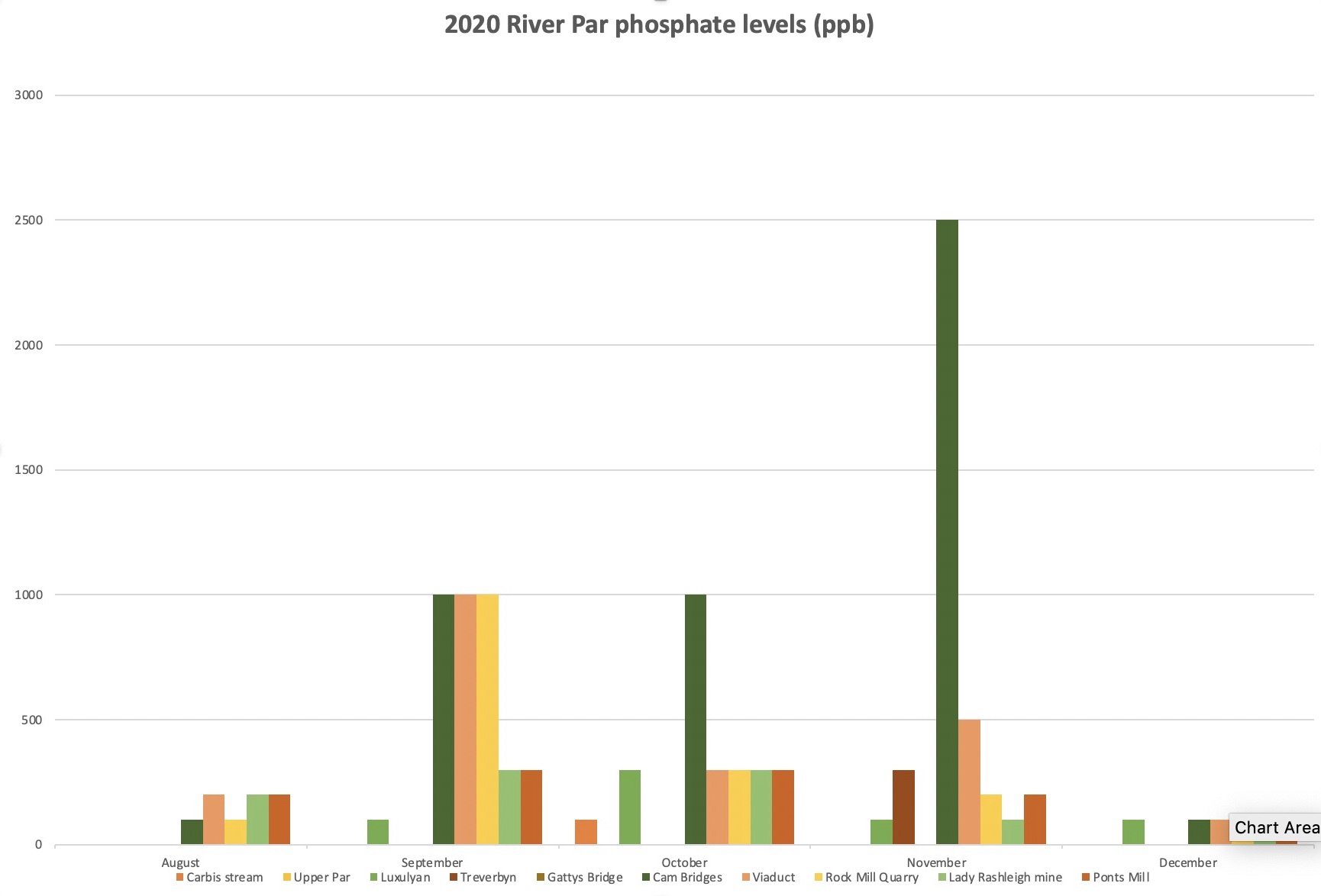2020 Results
Monitoring for 8 sites commenced in August 2020. Monitoring at the Treverbyn stream was added in November to better understand the potential source of phosphates being detected downstream.
Below are three graphs showing results for temperature (degrees centigrade), total dissolved solid (parts per million) and phosphate (parts per billion). Turbidity is not shown as there has only ever been one result reading less than 12, that is, the water has always been visually clear.



Summary
The main area of concern is the very high phosphate levels detected in September, October and November. Westcountry Rivers Trust agreed they were too high; we consequently informed the Environment Agency, who responded promptly and confirmed they were aware of the raised phosphate levels in the Lower Par from their own surveys in 2019.
Fortunately, funding has already been made available to look at enhancing the Par catchment environment, in addition to those already planned for the new flood defence programme (StARR). 'Walkover surveys' are planned soon for the Upper Par catchment to look for opportunities to improve habitats and mitigate sources of pollution, while similar surveys in the Lower Par catchment will assess watercourses and the impact historic mining activity has had on them.
The assessment will also consider the cause of elevated phosphate readings, although interestingly, these high levels have not necessarily had the negative impact on the water habitat that might be expected. More work will be undertaken to understand this situation.
The Environment Agency are very happy that regular monitoring is taking place through the Citizen Science project and will be working alongside the group to learn more. The interest shown by the Environment Agency is very encouraging and certainly makes the work done by the Friends' Citizen Scientists very worthwhile and very rewarding.

